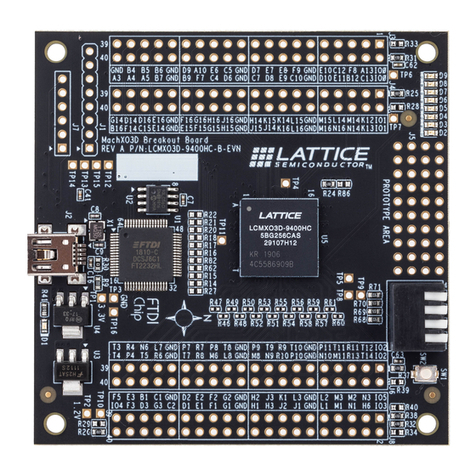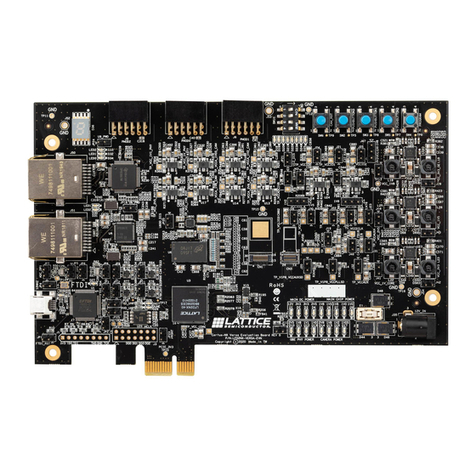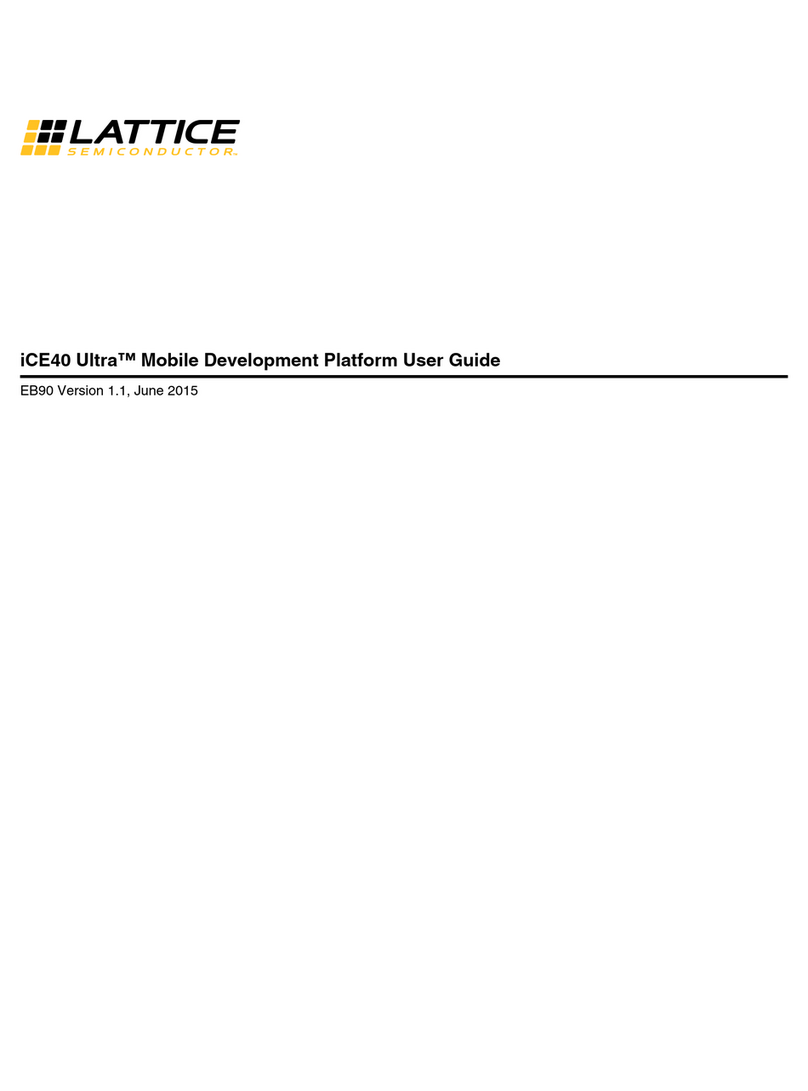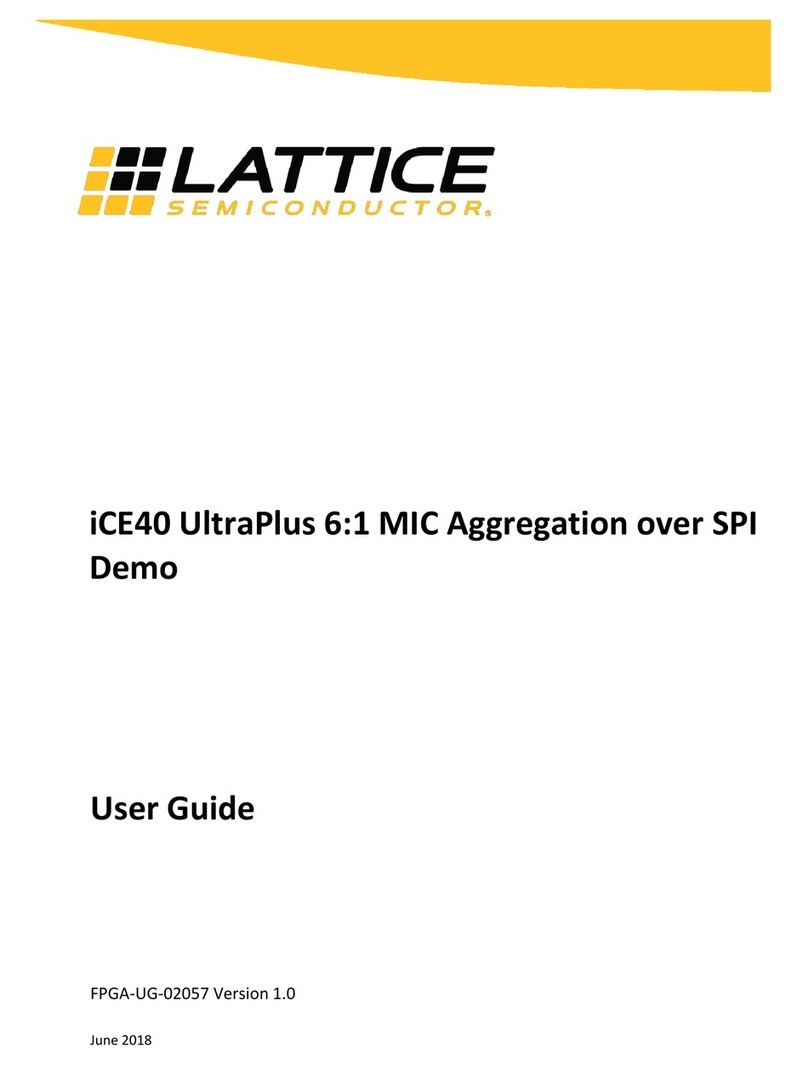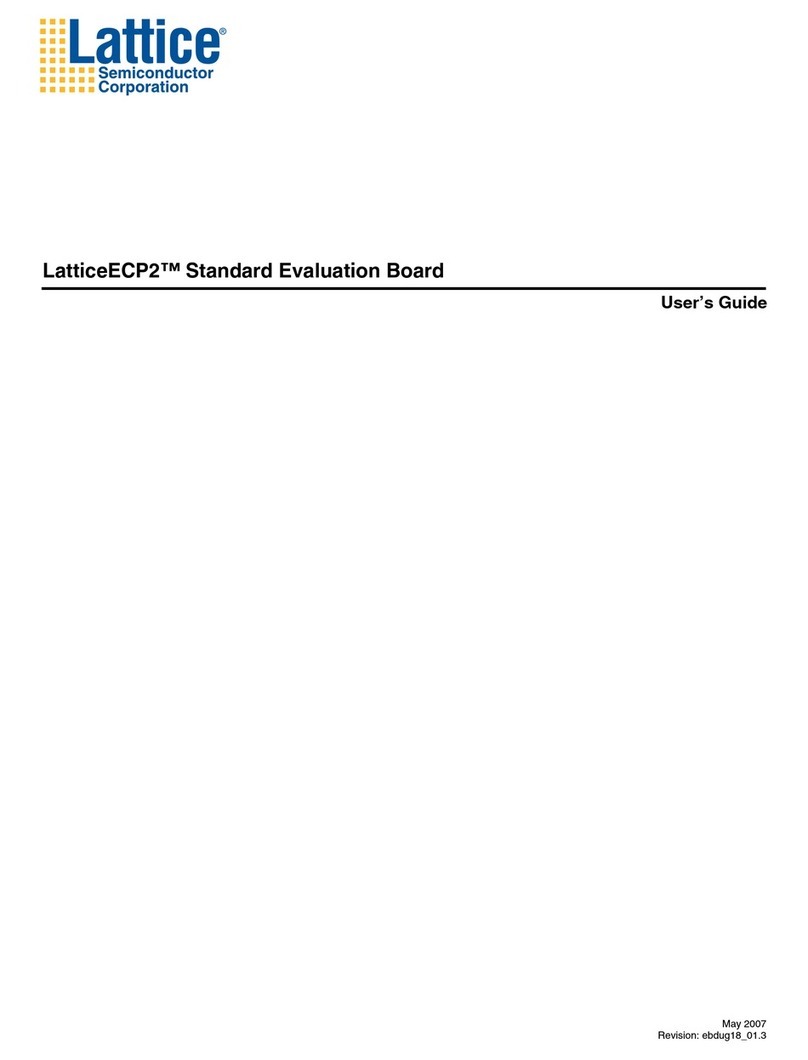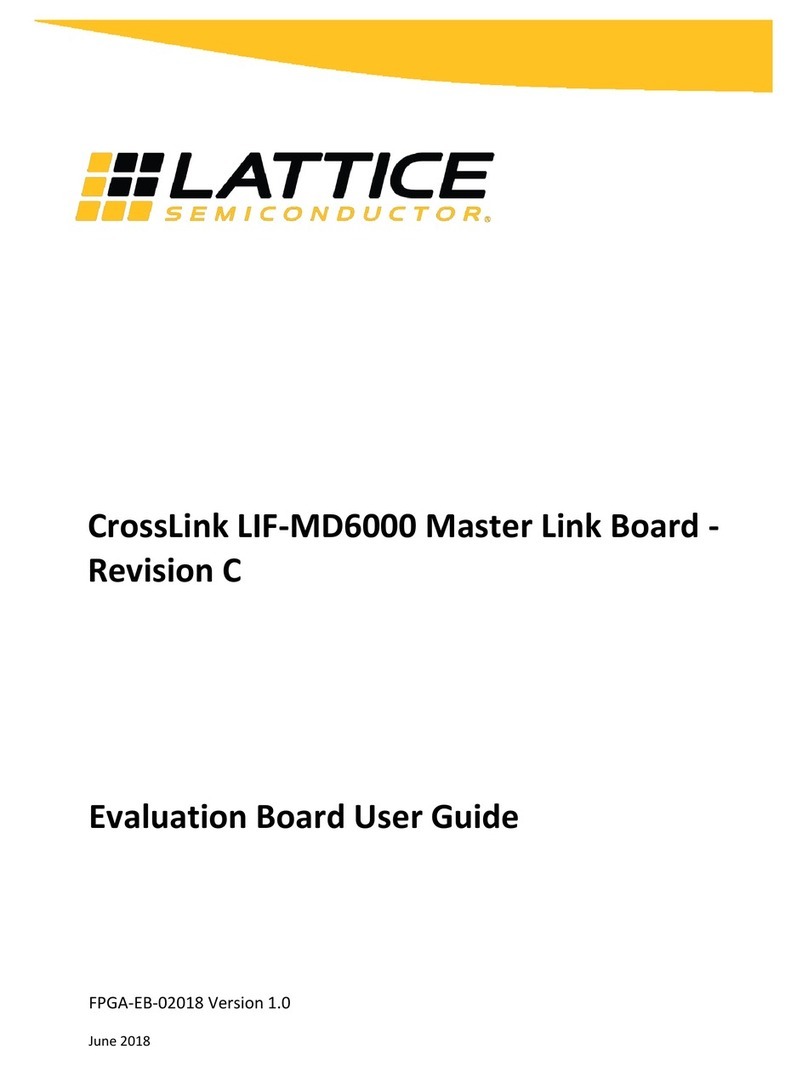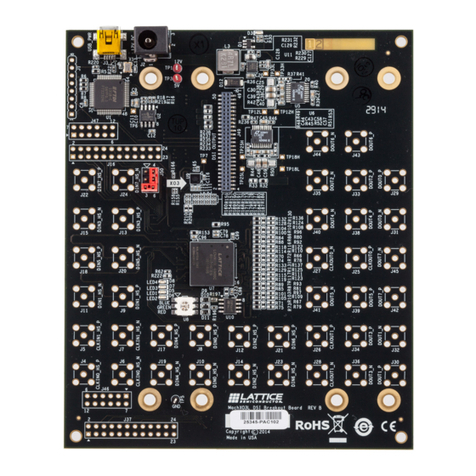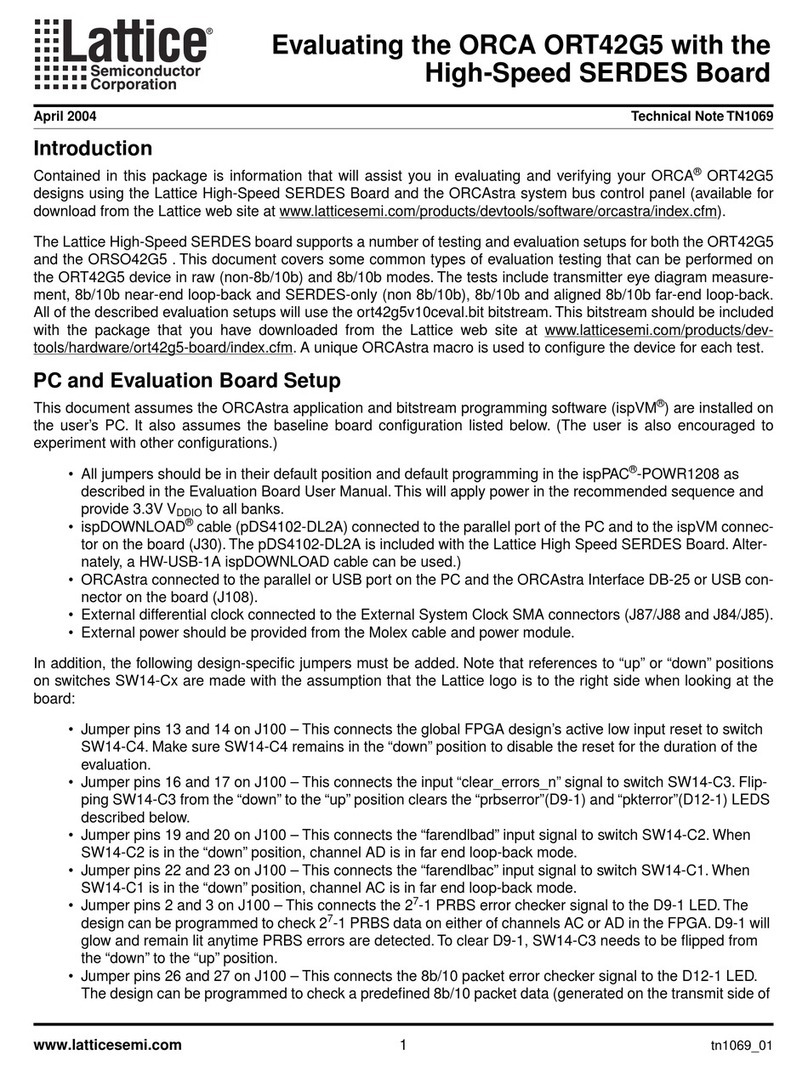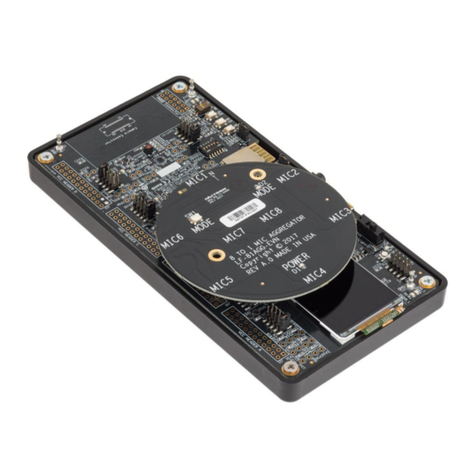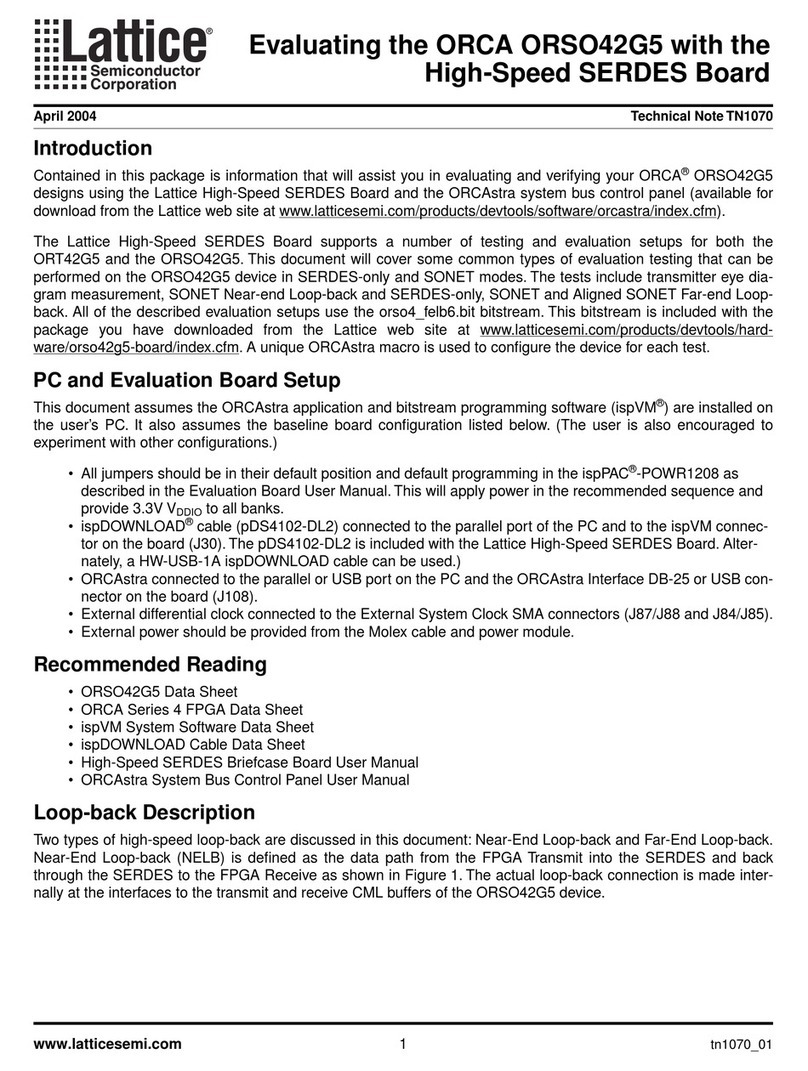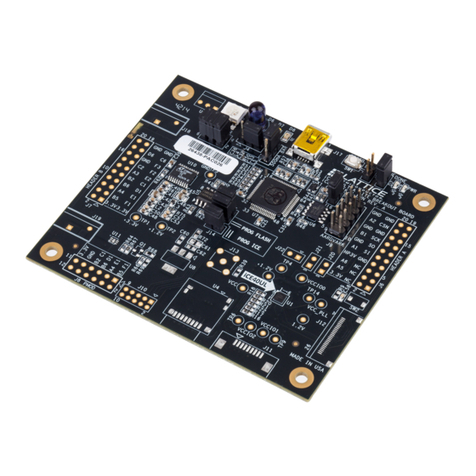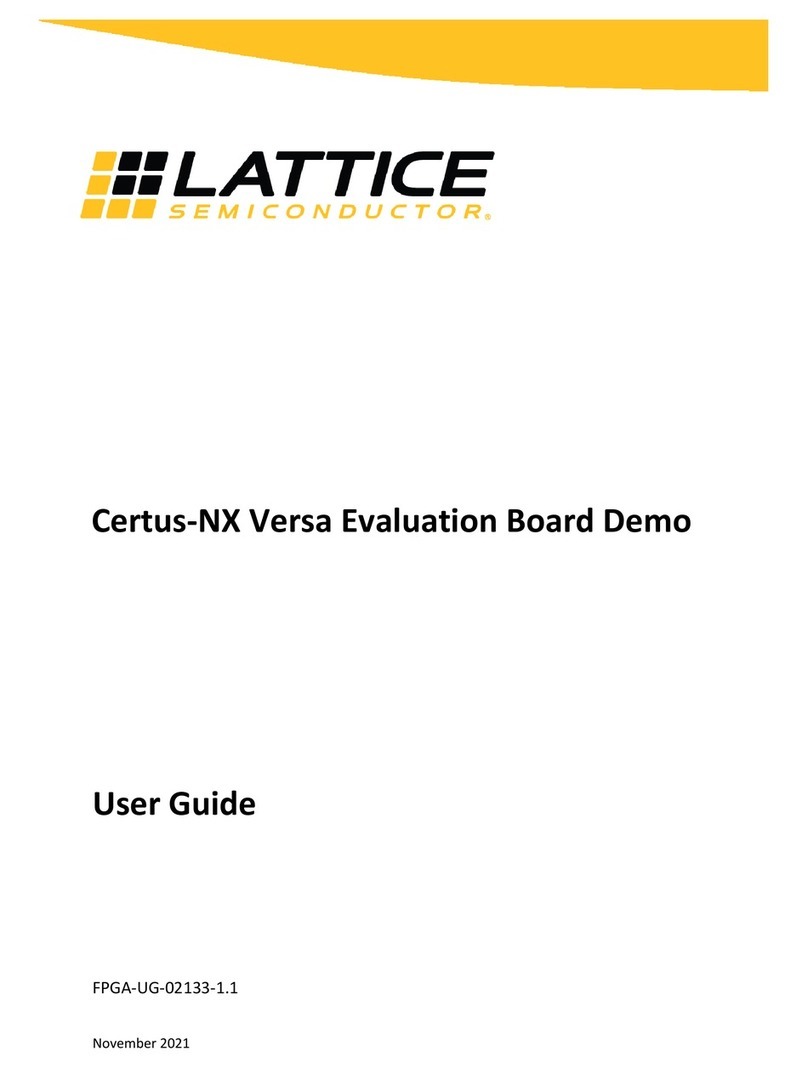
5
MachXO2280 Breakout Board Evaluation Kit
To load the FTDI chip USB hardware drivers via the stand-alone package:
1. Browse to www.latticesemi.com/breakoutboards and download the FTDI chip USB Hardware driver package.
2. Extract the FTDI chip USB Hardware driver package to your PC hard drive.
3. Connect the USB cable from a USB port on your PC to the board’s USB mini-B socket (J2). After connection is
made, a green Power LED (D9) will light indicating the board is powered on.
4. If you are prompted, “Windows may connect to Windows Update” select No, not this time from available
options and click Next to proceed with the installation. Choose the Install from specific location (Advanced)
option and click Next.
5. Search for the best driver in these locations and click the Browse button to browse to the Windows driver folder
created in the Download Windows USB Hardware Drivers section. Select the CDM 2.04.06 WHQL Certified
folder and click OK.
6. Click Next. A screen will display as Windows copies the required driver files. Windows will display a message
indicating that the installation was successful.
7. Click Finish to install the USB driver.
8. Red LEDs will light and start to flash according to the preprogrammed demonstration design.
See the Troubleshooting section of this guide if the board does not function as expected.
Download Demo Designs
The counter demo is preprogrammed into the Breakout Board, however over time it is likely your board will be mod-
ified. Lattice distributes source and programming files for demonstration designs compatible with the Breakout
Board.
To download demo designs:
1. Browse to the Lattice Breakout Board Evaluation Kits web page (www.latticesemi.com/breakoutboards) of the
Lattice web site. Select MachXO Breakout Board Demo Source and save the file.
2. Extract the contents of MachXO2280_BB_Eval_Kit_v01.0.zip to an accessible location on your hard drive.
The demo design directory Demo_LED is unpacked.
Recompile a Demonstration Project with Lattice Diamond
Use the procedure described below to recompile a demo project for the Breakout Board.
1. Install and license Lattice Diamond software.
2. Download the demo source files from the Lattice Breakout Board Evaluation Kits web page.
3. Run Lattice Diamond.
4. Open the Demo_LED_OSC.ldf project file.
5. From the Process view, select JEDEC File from the Export Files process.
6. Choose Export Files, right-click and choose Run.
After a few moments the JEDEC programming file is output.
7. See section the Programming with ispVM section for details on downloading a programming file to the board.
